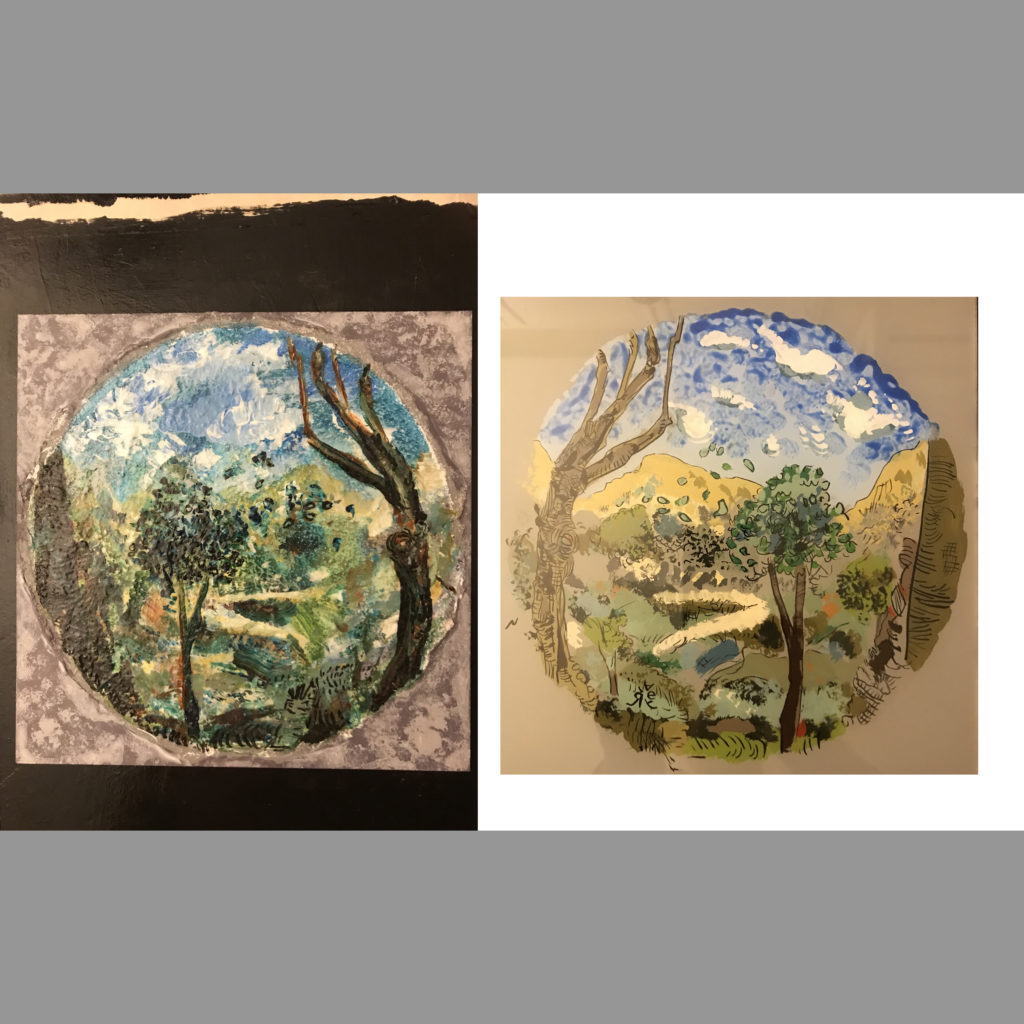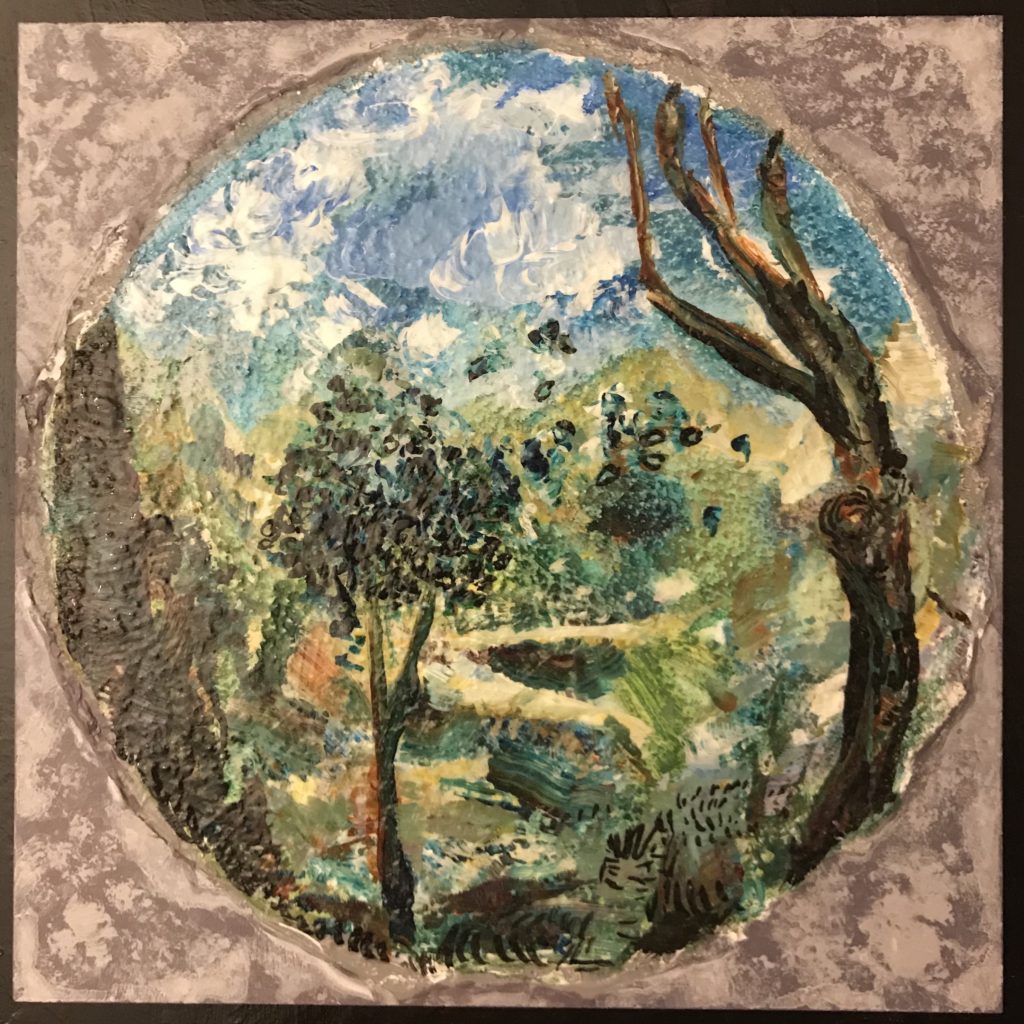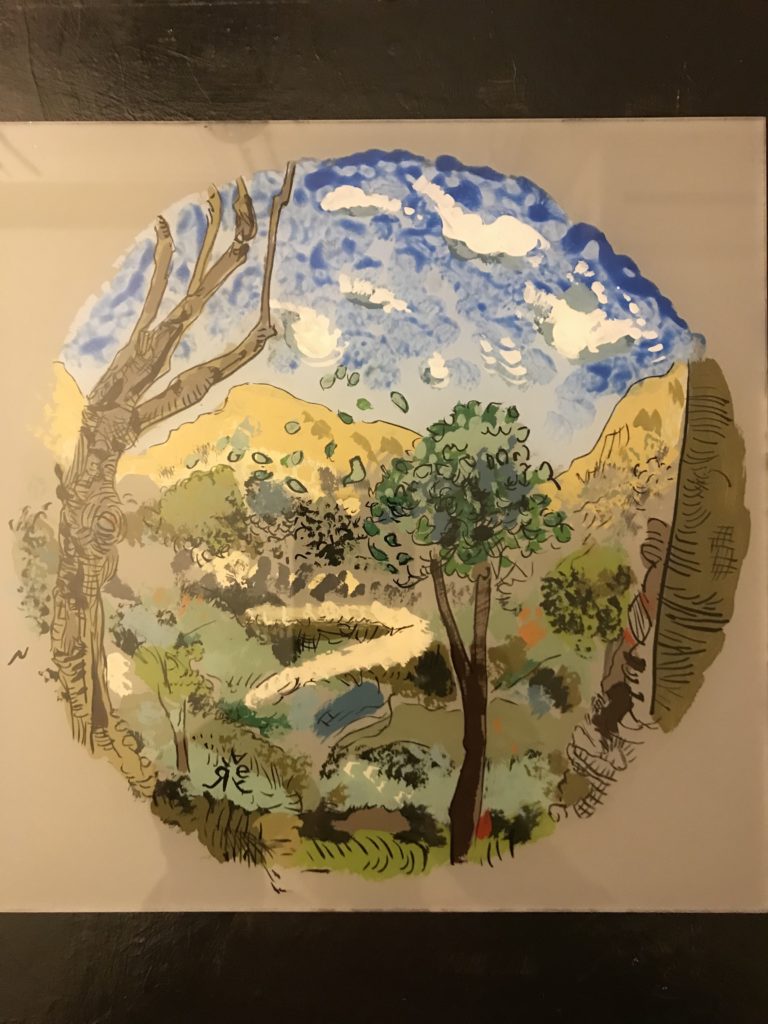Flat Toys – How to Make Them
When thinking about two-sided painting, questions might come to mind. I have a specific way of making two-sided paintings that may seem pretty involved. As I described before, I don’t paint on both sides. Essentially, I paint on one side of a see-through substrate called acrylic glass (also known as “plexiglass”). Whatever I paint first on this plexiglass will show through on the other side, forming its backside. Whatever goes on top of that is the frontside.
My painting steps are more complicated than that, however. I first paint on acrylic skins. These are paint skins I create by painting layers of various acrylic mediums on silicone bakeware or some other material that acrylic paints will not adhere to. When the skin is finished, I paint an image on it. When that is done, I peel it off the bakeware surface to use on a painting. I then take the plexiglass and set it on top of the skin. Like someone using tracing paper to emulate an image under it, I begin the same image on the plexiglass, but I like to look at this part as continuing the painting instead of tracing. In a way, it is no different than directly painting on the acrylic skin except now you have this transparent plastic in between it and the brush. Many of the elements from the original image on the skin never make it to the plexiglass. So, even if the two versions of the image appear similar, there will always be differences. And this difference should be enough to argue that this is not merely copying — decisions are being made at every step of the way.
The step where I am painting on the plexiglass is known as reverse painting. The aspect of this to remember is that a reverse painting is nothing like a regular painting. For one, the first marks you make will be the ones on the top of the image and not vice versa where in a regular painting the first marks are often lost under the layers of paint. As you add layers of colors, you are soon sealing off anymore contributions to the image. So, reverse painting has a finite number of marks that will be seen through before everything gets covered up. It is unlikely that you can correct mistakes or follow changes of heart, unless you catch them quickly before the drying phase is over.
A reverse painting also feels nothing like a conventional one. The surface has that flat, smooth plexiglass finish which gives the painting the slick look of a manufactured product. It can never even hint at the textures of a traditional painting. I enjoy the opposite qualities of the two sides. It also makes the painting more of an object because more than one side matters. You can hold it in your hand and turn it around.
When I am done with the backside, I come up with an underpainting for the frontside. Basically, these are colors and shapes that I feel will work well with the original paint skins I had started the work with. After I arrive at something satisfactory, I adhere the paint skins onto the plexiglass panel using an acrylic medium, which will bond the paint skin to the surface of the painting; this is using acrylic to stick acrylic onto acrylic, which is a fusion that is physically strong.
After a few finishing touches to the front, the painting is done.


